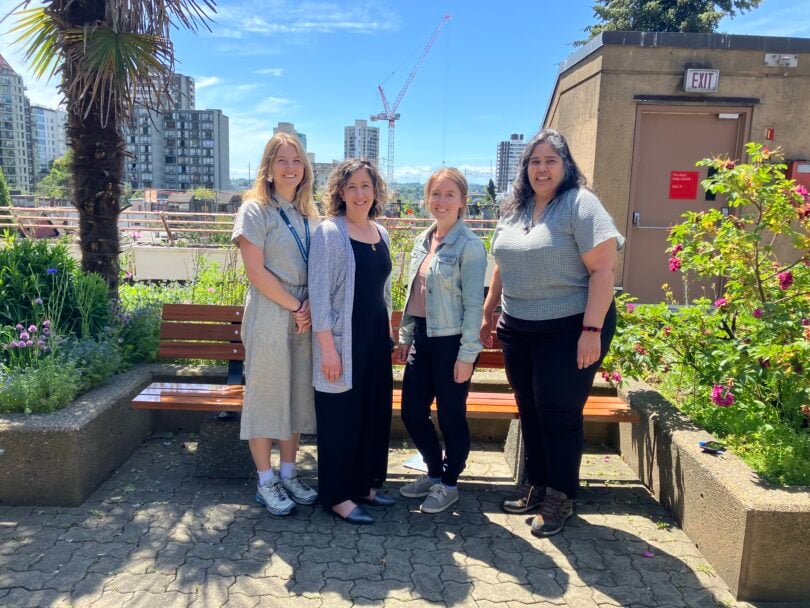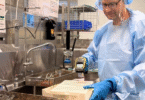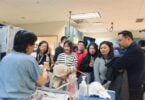When a patient at St. Paul’s Hospital told a staff member, “My ex-wife can call me to make sure I’m still alive,” it underscored the profound impact of a simple device—a phone. In the digital age, a phone has become an everyday necessity. But for patients experiencing homelessness, poverty or medical concerns, it can be a lifeline. The Phones for Health initiative is proving just that.
Developed by a passionate team of social workers and health care professionals, Phones for Health is a low-barrier, high-impact program providing refurbished smartphones and prepaid plans to patients who would otherwise be disconnected from essential services. Supported through Providence Health Care’s Knowledge Translation (KT) Challenge and Innovarium, the initiative holds the power to change lives.
“We’re not just handing out phones,” explains Jenny Hyman, Social Work Site Leader. “We’re restoring connection—to care, to housing, to family, and to hope.”
A response to a growing need
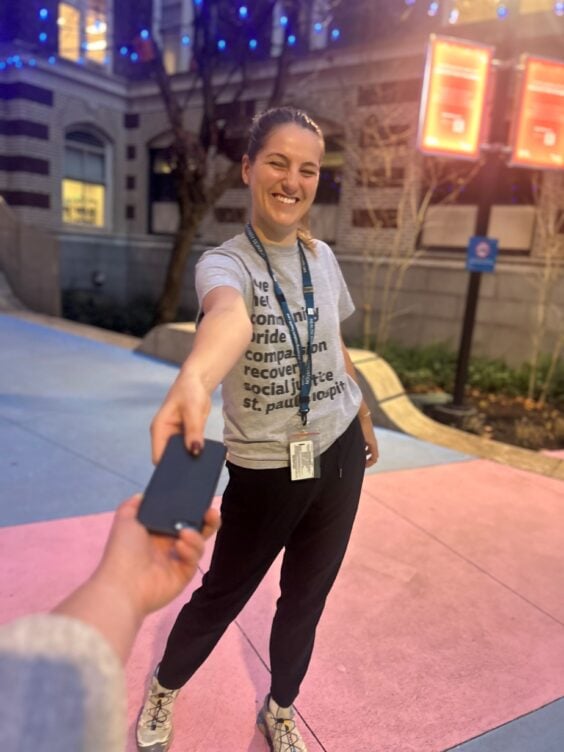
In 2023, internal data revealed that 868 patients who sought care at Providence Health Care did not have a phone. Without one, patients face barriers to follow-up care, housing applications, income assistance, and even basic safety.
“Phones are not a luxury,” says Clinical Nurse Specialist, Vininder Bains. “They’re a requirement for daily living and for accessing health care and social services. If that’s how we view the device, then it should be funded like any other medical tool.”
Inspired by Ontario’s similar Phone Connect Project, the team began building Phones for Health in 2023. After an initial grant application was unsuccessful, they pressed on, eventually securing funding and a donation of 46 phones from SPARC BC. A small pre-pilot helped refine the process, and by March 2025, 50 phones had been distributed.
In addition to direct donations, the initiative has also benefited from phone drives held during the PHC Sustainability Fair. Through a partnership with Digital Inclusion, donated devices from PHC staff are repurposed and reset— half are distributed by Digital Inclusion to other community members in need, while the other half are returned to support patients through the Phones for Health program.
More than a device
The program’s impact is best understood through the voices of those involved. Betty Ferguson, a social work assistant and research assistant on the project, has been conducting follow-up interviews with recipients.
“Some people have cried on the phone with me,” she says. “They’ve been so isolated—living in the Downtown Eastside, or without a fixed address—and they can now reconnect with their families. One person was able to speak with their child again. Another reconnected with a sibling in Toronto. That kind of social connection is huge for well-being.”
Phones have also helped patients stay engaged with mental health teams, attend appointments, and maintain housing. “We’re hoping to see a trend where having a phone helps prevent readmissions,” Ferguson noted. “People can manage things on their own without needing to come back to hospital.”
Designed with dignity
Each phone recipient is screened for digital literacy using the Digital Health Literacy Scale. Based on their score, they receive tailored support—ranging from printed guides and one-on-one orientation and connections with community partners like the Purpose Society’s Digital Inclusion Project, which helps individuals build digital skills. The team also considers accessibility needs, offering flip phones to those who may find smartphones overwhelming.
“Some folks have never had a phone before,” Ferguson explains. “We’re not just giving them a device—we’re giving them the tools and confidence to use it.”
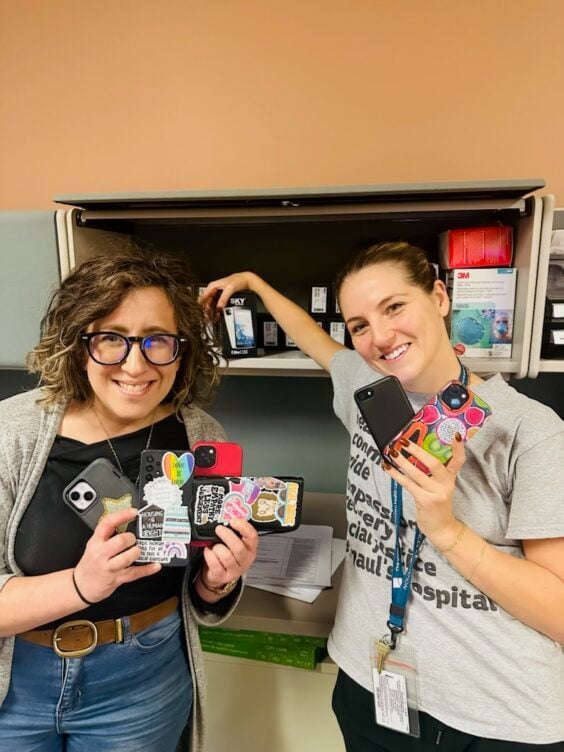
The program’s success is rooted in its collaborative model. Social workers identify eligible patients, while social work assistants manage distribution and education. The Cell Clinic, a local business, refurbishes pre-owned phones and handles logistics. “They’ve been incredible partners,” explains Bains. “They even waived fees when we first approached them with a bag of second-hand phones, a hope for a pilot, and –at that point– no funding.”
Stories of impact
“A lot of the patients that I support are individuals who are either newly connected to community services or have resurfaced after being lost to care and need a phone for follow-up,” adds Genelle Pablo, a social work assistant. “One patient was able to reconnect with his family in Quebec and reassured them that he was safe. Another patient was able to reconnect with his brother and is now in treatment while preparing for second-stage housing. The phone helped them rebuild their relationships, which significantly contributed to their success in treatment and recovery.”
“Phones are helping people to move forward,” explains Hyman. “They’re not just tools—they’re part of a safety plan, a recovery plan, a housing plan.”
Looking ahead
The program has distributed 88 phones so far, demonstrating a meaningful impact for patients navigating health systems and housing without a mobile device. A mixed-methods evaluation is underway, including chart reviews and follow-up interviews, to assess outcomes like reduced emergency visits and improved service engagement.
However, the program currently faces a critical challenge: funding has been exhausted.
The team continues advocating for phones to be recognized as essential health tools, hoping that demonstrating the program’s effectiveness will attract the long-term support needed to resume operations and continue this vital work.
“If we invest a little more upfront,” said Hyman, “we’ll save money and lives in the long run.”
Advice for others
For teams looking to replicate the model, the advice is clear: build a strong team, invest in time to plan and research funding opportunities, and don’t try to do it alone. “The sky is the limit,” said Ferguson. “Be creative, take the risk, and focus on what’s going to be meaningful for people.”
As the Phones for Health team continues their work, one thing is certain: connection is care. And sometimes, all it takes is a phone.

